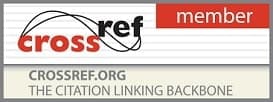2021, Vol. 4, Issue 2, Part A
Study of eosinophil count in nasal smear and peripheral blood smear in allergic rhinitis children
Author(s)
Dr. MD. Safiuddin Hasan and Dr. Ankur Agarwal
Dr. MD. Safiuddin Hasan and Dr. Ankur Agarwal
Abstract
Background: Allergic rhinitis and asthma are two very common allergic diseases of respiratory tract in pediatric patients. In this geographical area, where the prevalence of allergens exists, the role of allergens as the etiological factor is higher in allergic respiratory disorders. Confirmation of allergen as etiologic agent is cumbersome in a small setup, where IgE estimation and allergy tests are not accessible. With an appropriate history and detailed examination the diagnosis usually may not be problematic. Routine investigations may not contribute much for the final diagnosis but may help in ruling other possibilities. This study is done to know the eosinophil counts in nasal and blood smear and to assess the feasibility of nasal cytogram which is simple, economical and reliable investigation in patients of allergicrespiratory disorders. In this study, the simple test of peripheral smear and nasal smear eosinophil count as a reliable diagnosis to solve the above problem and establishing allergy as etiological agent has been tried.
Objectives
1.To know eosinophil count in nasal smear and blood smear in children with allergic rhinitis.
2.To assess the feasibility of nasal cytogram which is simple, economical and reliable investigation in the diagnosis of allergic rhinitis.
Methodology of study: This is prospective clinical correlation study conducted in outpatient visiting Department of Paediatrics and ENT Department hospital. 60 children of age group between 2 to18 years were selected to estimate the eosinophil count in nasal and peripheral smear in allergic rhinitis. All allergic rhinitis cases based on clinical signs and symptoms were selected and investigated for nasal and blood eosinophilia. The nasal and blood eosinophilia were compared with each other and the clinical findings of allergic rhinitis were studied.
Results: In this study peak age incidence is between 6-10 years and there is equal gender distribution. Seasonal variation and pollen allergens were the most common risk factors for allergic rhinitis. Running nose and the nasal obstruction were the most common symptoms in children with allergic rhinitis followed by sneezing and itching. One tenth of the children with allergic rhinitis had bronchial asthma. Nasal eosinophilia contributes to the diagnosis of allergic rhinitis as compared blood eosinophilia. Mild intermittent variety of allergic rhinitis was the most common form of allergic rhinitis. Among various risk factors for allergic rhinitis, seasonal variation and pollen allergens have significant association with the severity of allergic rhinitis. Among various symptomology, only itching had a significant relation to the severity of allergic rhinitis.
Pages: 29-33 | Views: 741 | Downloads: 317

How to cite this article:
Dr. MD. Safiuddin Hasan, Dr. Ankur Agarwal. Study of eosinophil count in nasal smear and peripheral blood smear in allergic rhinitis children. Int J Paediatrics Geriatrics 2021;4(2):29-33. DOI: 10.33545/26643685.2021.v4.i2a.173






